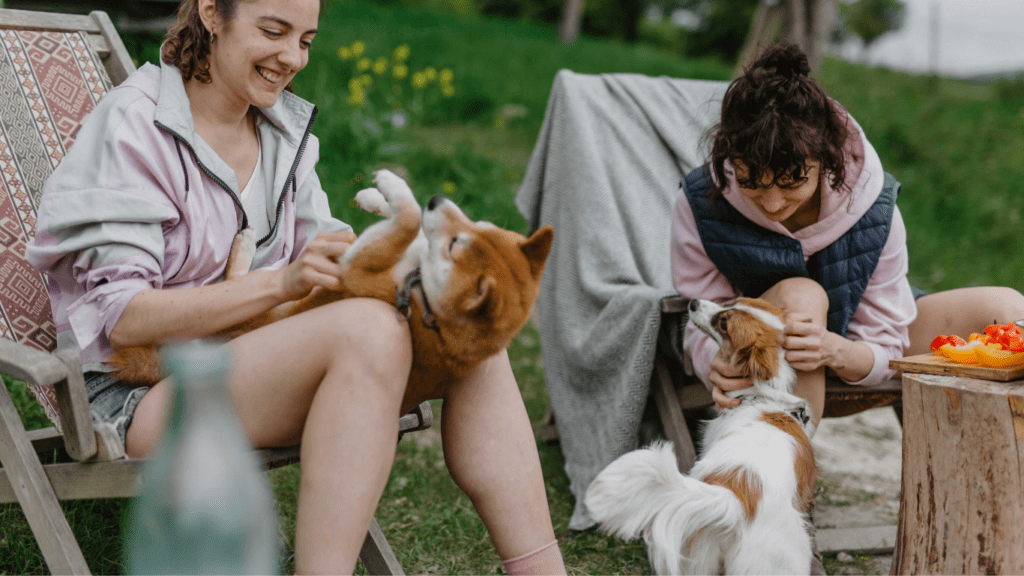Caring for a dog brings love, laughter, and moments of joy—but it can also be a source of stress and exhaustion. From early morning walks to vet appointments and training sessions, the responsibilities can add up quickly. It’s easy for dog parents to forget about their own well-being while staying focused on their furry friend. Fortunately, there are manageable, practical ways to balance pet care and self-care. This article explores simple relaxation methods that fit naturally into the daily routine of dog owners.
By implementing small lifestyle changes, dog parents can maintain emotional balance, reduce burnout, and ultimately enjoy a healthier and happier relationship with their pet. Taking care of your mental health is not selfish—it’s necessary for sustaining long-term care and keeping your dog emotionally secure as well.
Integrate Relaxation into Walks and Outdoor Time

One of the most common daily tasks for dog parents is going for walks. Instead of rushing through them, consider transforming these outings into mindfulness sessions. Take time to notice your surroundings—trees, sounds, weather—and let your mind slow down. Dogs are naturally curious and present in the moment; humans can benefit from mirroring that behavior.
When you sync your pace with your pet’s and focus on sensory details—the crunch of gravel, the warmth of sunlight—you begin to shift your mental focus away from stressful thoughts. Practicing deep breathing during walks can amplify this calming effect. Over time, this habit not only reduces stress but also improves mental clarity and emotional regulation.
Walking in green spaces, like parks or trails, also has proven benefits for reducing anxiety and improving mood. Even a 20-minute stroll can provide mental clarity and a small physical workout. To enhance your experience, leave your phone behind or switch it to silent. Focus on your dog, your breath, and the rhythm of your steps.
This ritual can become a form of daily therapy, allowing both you and your dog to bond while recharging emotionally. Making walks more mindful also makes your pet more attentive and less reactive, reinforcing positive behavior through calm leadership.
Use Calming Tools and Pet Tech for Shared Comfort

Dogs, like humans, can experience stress and overstimulation. Investing in calming products—such as weighted blankets, anti-anxiety dog vests, or soothing background music—can benefit both you and your pet. These tools create a peaceful environment that promotes rest and reduces tension. Shared comfort through these calming solutions helps reinforce a sense of security for your pet while supporting your own emotional well-being.
Additionally, pheromone diffusers, orthopedic beds, or memory foam mats can offer physical comfort that encourages relaxation. Combining tactile comfort with consistent cues—such as music or dim lighting—signals the body to enter rest mode, helping both of you wind down after a busy day.
In the same way, smart gadgets can simplify routines and reduce decision fatigue. For example, using a mouse sensitivity converter when adjusting in-game settings can make quick gaming breaks more enjoyable, especially for dog owners who use gaming as a stress outlet. This type of digital assistance saves time, reduces frustration, and ensures your moments of relaxation remain stress-free.
When your tools work with you instead of against you, your downtime becomes truly restorative. Efficient solutions like auto-feeders, treat-dispensing cameras, or ergonomic tech tools give you extra space to relax, game, or focus—knowing your pet’s needs are still being met with minimal stress.
Create a Consistent Routine That Includes “Me Time”
Dogs thrive on routine, and so do people. Setting a consistent schedule helps prevent unexpected stressors and supports better time management. Feed your dog, walk them, and schedule play sessions around the same time each day. Once this rhythm is in place, carve out moments for yourself—whether it’s a quiet coffee, a short yoga session, or reading. Repetition builds trust for dogs and predictability for their owners, which lowers cortisol levels and enhances feelings of control.
A daily rhythm reduces uncertainty and the anxiety that comes with it, allowing you to plan for breaks and mental resets. When both you and your dog anticipate what’s coming next, the day feels less chaotic and more purposeful.
Even short windows of personal time throughout the day can refresh your mindset. By aligning your needs with your pet’s predictable habits, you’ll reduce the chances of burnout while still meeting your dog’s emotional and physical needs. For instance, syncing your morning meditation with your dog’s post-breakfast nap is an excellent way to recharge without interruptions.
If your dog enjoys a set “quiet time” after meals or long walks, take advantage of this natural lull to do something relaxing—stretch, listen to a podcast, or simply breathe deeply. Scheduling your “me time” is not selfish; it’s essential for sustained and balanced caregiving.
Try Relaxing Together Through Shared Activities
There’s something uniquely calming about doing something soothing with your dog. Many dogs enjoy gentle grooming sessions, slow petting, or simply lying next to their owner during meditation or a quiet TV evening. These shared experiences reduce heart rate, promote oxytocin release, and foster a deeper sense of connection. Incorporating your pet into these relaxing moments strengthens the emotional bond and doubles the calming effect for both parties.
Your dog learns to associate your calm energy with safety, making them more relaxed and less anxious overall. The more calm you radiate, the more it reflects in your dog’s behavior and temperament.
For more active personalities, consider dog-friendly yoga (often called “doga”) or relaxed agility games in the backyard. These shared rituals not only improve your physical health but also keep your dog mentally stimulated. The goal isn’t performance—it’s enjoyment and connection.
Incorporating gentle movement with your dog not only keeps them engaged but also encourages you to stay active without pressure. Whether it’s slow stretching with your pup nearby or a calming nature-based activity like paddleboarding or hiking together, the mutual engagement enhances emotional well-being.
Create a Soothing Environment at Home
A peaceful home setup can significantly affect your stress levels. Declutter the areas your dog uses most, and choose calming colors and natural lighting when possible. Comfortable dog beds, soft rugs, and quiet spaces contribute to a sense of security for both you and your pet. Products like innovative tunnel beds or cozy pet furniture from URPetStore can help you design a relaxing environment your dog will love. A clean and harmonious space has a direct impact on your mood, concentration, and ability to unwind at the end of the day. Think of your home as a shared retreat—one that benefits both species. When your pet’s zones are tidy and comfortable, they are less reactive or anxious, making your home feel less hectic overall.
Aromatherapy can also help, provided the scents are safe for dogs (lavender and chamomile are popular options). Consider using a diffuser during quiet evenings or nap time. Playing soft instrumental music or nature sounds during downtime or when leaving the house can reduce separation anxiety—for both the dog and the owner.
If your dog gets stressed while you’re away, a cozy den-like corner with familiar smells, white noise, and your worn T-shirt can offer additional comfort. Creating a home filled with relaxing cues supports long-term mental health and a calmer lifestyle for everyone under the same roof.
Conclusion
Being a dog parent is both rewarding and demanding, but taking care of yourself is not optional—it’s essential. By blending relaxation techniques into daily routines, investing in helpful tools, and embracing moments of calm with your dog, you can experience the joys of pet ownership without constant fatigue. These strategies, when practiced consistently, not only reduce anxiety but also improve the overall quality of life for both you and your companion.
Remember that self-care and pet care are not opposing forces—they can work together to enhance your shared lifestyle.
Even the simplest actions—like a mindful walk, a tech-assisted break, or a shared rest—can dramatically improve your well-being. A healthy balance between responsibility and rest allows you to be more patient, attentive, and joyful in your care. Ultimately, a relaxed owner is a better caregiver, and your dog will sense and reflect your calmness, creating a stronger, more harmonious bond.
Taking small but intentional steps toward stress relief will ensure that both you and your dog enjoy not just a functional life together—but a joyful and balanced one.


 Lead Pet Behavior Specialist
Brian Camacho is an expert in pet behavior and training at Pet Paw Shack. With a deep understanding of animal psychology, he specializes in helping pets and their owners build strong, healthy relationships through positive reinforcement techniques. Brian’s innovative approach to training focuses on making behavior modification a fun and rewarding experience for both pets and their families.
Lead Pet Behavior Specialist
Brian Camacho is an expert in pet behavior and training at Pet Paw Shack. With a deep understanding of animal psychology, he specializes in helping pets and their owners build strong, healthy relationships through positive reinforcement techniques. Brian’s innovative approach to training focuses on making behavior modification a fun and rewarding experience for both pets and their families.
